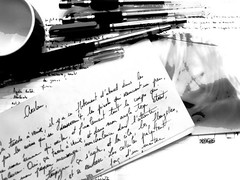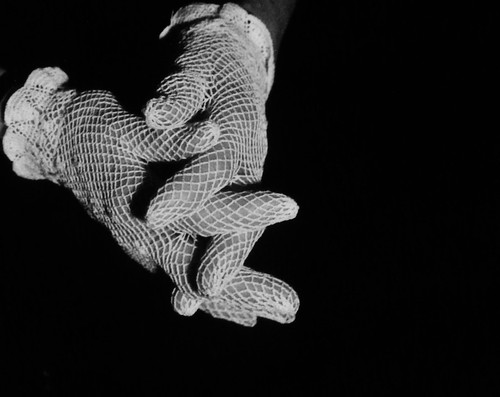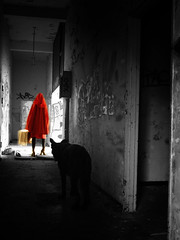They say that good books eventually find their way into readers’ hands, and because of a fevered novel built around a box of unclaimed personal relics, I’m inclined to agree. A few years ago, while I was a preliminary judge for a fiction competition that will (for purposes of confidentiality) remain nameless, I encountered a riveting manuscript full of old pictures. It focused on an American scholar named Trevor Stratton who comes into possession of the abovementioned box of relics, and finds himself drawn into the life of a long-dead Parisian woman named Louise Brunet—specifically, into a brief stretch of 1928 when she has a short but delicious affair with a man in her apartment building. Trevor serves as the linchpin of the narrative as he explores the contents of the box, getting pulled ever deeper into Louise’s world (and into his own affair with the keeper of the box, a secretary named Josianne), until his life and Louis Brunet’s life become, for a few fevered moments, virtually indistinguishable.
Though I enthusiastically passed this manuscript on to the final judges, it didn’t win the prize; and since the competition was anonymous, I had no way to track down its author (it would have been tacky to try). I just kept an eye out for it, hoping that it would find its way into print, until this February, when I saw an eerily familiar book reviewed in the New York Times. Its title (new since I first read it) turned out to be 13, rue Thérèse (Reagan Arthur, 2011) and its author turned out to be Elena Mauli Shapiro, whose mother found the unclaimed box in a neighboring Paris apartment upon Louise Brunet’s death in 1983.
As a lifelong aficionado of second-hand objects, I couldn’t help but love this novel. It proves that (a) yes, good books do find their way into readers’ hands, and (b) all once-beloved objects in the world are alive in a way that only art can let us understand.
Interview
Steven Wingate: Your book jacket and promotional materials note how you came into possession of the Louise Brunet reliquary. But how did you come to weave a story around it? How long did you carry this book around in your imagination before you started to write, and what obstacles/encouragements fell in your way?
 Elena Mauli Shapiro: When I handled the objects growing up, I always wondered what the story behind them was. The fact that I could never know made them all the more compelling; the objects could serve as projection screen for me. Because there was no story, I could choose any story I wanted. I knew for most of my life that I wanted to write a book out of that box, but I didn’t know what form it would take. I only knew that I wanted to be a good enough writer to do justice to these artifacts, or at least not to totally fail them. I wrote many stories before I started this book. Thousands of pages of crap! For practice. I could see myself getting better at the craft but I don’t know that I could have decided on my own, consciously, when I was “good enough.” It was my unconscious that made the decision: I started dreaming about the objects in the box. The first thing I saw was a narrative moving backwards from a picture of a melancholy elder gent taken in 1943 to an undated picture of that same gent taken in his youth. The pictures themselves were part of the story, and that’s when I knew that visual renderings of the objects were going to be in the book. That’s when I knew, “uh oh, better strap in, because now’s the time to get in the box!”
Elena Mauli Shapiro: When I handled the objects growing up, I always wondered what the story behind them was. The fact that I could never know made them all the more compelling; the objects could serve as projection screen for me. Because there was no story, I could choose any story I wanted. I knew for most of my life that I wanted to write a book out of that box, but I didn’t know what form it would take. I only knew that I wanted to be a good enough writer to do justice to these artifacts, or at least not to totally fail them. I wrote many stories before I started this book. Thousands of pages of crap! For practice. I could see myself getting better at the craft but I don’t know that I could have decided on my own, consciously, when I was “good enough.” It was my unconscious that made the decision: I started dreaming about the objects in the box. The first thing I saw was a narrative moving backwards from a picture of a melancholy elder gent taken in 1943 to an undated picture of that same gent taken in his youth. The pictures themselves were part of the story, and that’s when I knew that visual renderings of the objects were going to be in the book. That’s when I knew, “uh oh, better strap in, because now’s the time to get in the box!”
In your writing process, did you “shuffle” these relics a lot as you moved from draft to draft, or did you lay out a stable framework that you stuck with all the way through? Or did some change and others not change?
It was eerily organic the way that came together. There are six main sections in the book and every section begins with a letter Trevor writes where he lists the artifacts that he is studying, that are forthcoming in that section. It just came out that way. I didn’t open the box and look through the artifacts wondering what would go in there next. Instead the story categorically demanded specific objects in the form of Trevor’s list. Then I would scan them. There was a little bit of shuffling around, order-wise, at first. But the momentum of the story was such that by the last section, in which Trevor has completely let go of the boundary between himself and his text, there wasn’t even a list. The story just had me get up and fetch it things when it needed them. I didn’t realize this was all that weird until the publisher wanted to add an extra to the enhanced e-book edition, a few scans of objects that weren’t used in the story. I realized then that they thought I had scanned everything in the box, and then curated the images. I was embarrassed to tell them that I didn’t really have any extra scans, that I had scanned only what the story asked me for. So then we had to take some scans specifically for the e-book extra.
Some relics get repeated—the WWI picture, for instance. Were they your favorites before you started to write, or did you find that your characters pulled you toward them? And at what point did the relics not “in the documentation,” such as the music written as a love token by Louise’s piano student, enter into your process?
In any story, repetition of certain motifs accrues meaning. It was the same with the story the visuals told. The ones that got repeated were the ones that my husband made some truly striking comments about. After I’d written about that WWI picture, my husband said, “hey look, the guys in the light uniforms are French, and the guys in the dark uniforms are British.” It blew my mind because despite my careful observation of the photo, I had not realized this before, and yet after he said it, it was so glaringly obvious. Then after I wrote about the bullets, he offhandedly pointed out in his casual physicist way, “oh those are supersonic.” “WHAT? How do you know that?!” “Oh because the ends are pointy.” “So wait, so, that means, the bullet is inside you before you hear the gunshot?” “Yep.” “Fuck! Harris! Why did you tell me that? I am never sleeping again!” And then obviously, I absolutely had to put that in the book.
The relics “not in the documentation” made their way in when the story asked me to put in the overheated love letter Louise writes for the boy in the staircase. That was an episode I lifted from one of my practice stories, which I wrote when I was twenty. At that time I had actually handwritten the love letter, which I still had. I wondered how I could morally put that in, since it was not part of the Louise Brunet reliquary but part of mine, and then I laughed at myself: I was having compunctions about forging documentation for a piece of fiction. How fabulous! That’s when I decided that as Trevor was losing sight of the boundary between himself and the story he was telling, he would start to increasingly insert objects “not in the documentation.”
The aesthetic space of 13, rue Thérèse is inhabited by two big shadows: Flaubert’s Madame Bovary, which any novel about an adulterous Frenchwoman must reckon with, and A.S. Byatt’s Possession, which arguably started a trend of books about research and romance that has lasted over two decades. How did you deal with these precedents, and did that change over the course of writing the novel?
Flaubert is in the book in a big way, explicitly referenced and even quoted. But not Madame Bovary itself—I thought that was not necessary, since the parallels, as you point out, are already so strong. He had a passionate, somewhat unhinged approach to his writing that I really relate to, that I tried to capture with the feral way Trevor tells the story. The book also owes a lot to Possession, but I didn’t really realize that until after. I was in academia at the time I wrote it, so it seemed perfectly natural to me to have research turn into channeling, into a giant romantic allegory about storytelling. Then when I emerged from the fever, I wondered, “hey, where have I seen this before? Oh yeah! Thank you, Ms. Byatt.”
 The most intriguing thing to me about 13, rue Thérèse is the layering of voices within it and the fact that your narrator can’t be pinned down. Trevor narrates some of the story through his letters, but in other places it could be read as Louise herself, as Josianne, as an “altered” Trevor, or even as an omniscient narrator who can see through time. At one point the narrator says “this is the year of our story,” which makes that voice very conspiratorial with the reader without identifying it. Were these voices layered on top of each other from draft to draft, or did they all show up at the beginning of your process and duke it out for the right to speak?
The most intriguing thing to me about 13, rue Thérèse is the layering of voices within it and the fact that your narrator can’t be pinned down. Trevor narrates some of the story through his letters, but in other places it could be read as Louise herself, as Josianne, as an “altered” Trevor, or even as an omniscient narrator who can see through time. At one point the narrator says “this is the year of our story,” which makes that voice very conspiratorial with the reader without identifying it. Were these voices layered on top of each other from draft to draft, or did they all show up at the beginning of your process and duke it out for the right to speak?
At first I wrote snatches of text in the third person, the point of view being either close to Louise or uncannily omniscient, like the Voice of History. Also the text often addressed me directly. It was a bit crazy-making, which was why I decided to create Trevor—as a secondary containment device. He would tell this story, and he would lose his marbles a bit doing it, so that I didn’t have to. I made him on January 12th, 2006, and he started speaking quite naturally in a letter that was dated January 12, addressed to Dear Sir. When I saw that, I said, “what? Who the hell is this Sir?” Trevor laughed at me, said maybe I would find out if I stopped halting the proceedings every time I didn’t know what was going on and just went ahead and wrote the damn thing. So I did; it was quite a ride. I let him possess and be possessed; I let the narrative frame breach the story; I let the boundaries blur between collective and individual experience. I wrote the prologue “On the Record,” after I’d written the whole book to situate the readers a little bit, so that they weren’t dropped into the novel quite as unceremoniously as I was.
You have no actual relationship with the dead Louise Brunet, but you have handled her possessions—a fact that you share with the Trevor Stratton character. How did this commonality come into play as you rendered Trevor? And what about Josianne, the departmental secretary who serves as the gatekeeper to the mystery of the reliquary? At what point did she enter your writing process, and how did working with her character compare to working with Trevor and Louise?
While I was writing, Trevor was my imp. He was throwing stuff around in my brain, being horribly disruptive and also quite a hoot. He was also, obviously, my double, since he handled the objects as I handled the objects. When I took a scan of a pair of lace gloves somewhere in the middle of the story, I noticed that I’d left fingerprints on the glass scanning bed that were perfectly rendered in the image. I thought, “damn,” and tried to wipe up the fingerprints and take another image but instead I just made ugly smudges. Then I decided I rather liked the fingerprints, these implied ghostly hands that happened to be on an image of a pair of gloves, which implied another pair of ghostly hands. Then I laughed when I realized—of course, these are part of the story: these are Trevor’s fingerprints. So I made a note in the text where Trevor refers to his own fingerprints—but these fingerprints cannot be seen in the finished book of course, because the image as printed is too small. Which makes the whole thing doubly delightful: the fingerprints of the author that are there but cannot be seen, posing as the erased fingerprints of a narrator who flickers in and out of his own text. So you see it was all very impish, and I wanted to capture that in the story too; I wanted to have a character who would be Trevor for Trevor. So then I made Josianne for him and for me too. We were all a bunch of total goofballs together.
What happened with you and the book—both aesthetically and professionally—in those years between when I read the manuscript for the contest and when it got bought, and what was your journey during that time?
I finished the manuscript in late summer of 2008, and wondered what to do with it. I only [submitted the novel to one] contest—mostly I queried agents. When I was a finalist for the contest, I was completely and utterly surprised! I had sent the manuscript in with the assumption that I was tossing it into the maw of oblivion (which is really the only way to stay sane when submitting stuff). I actually landed an agent right around the same time I was told I was a finalist sometime in February 2009—it was weird how those two things happened at once! Then when I got my agent, we did a little tinkering around with the book before she sent it to editors. The book was purchased by Reagan Arthur in June, so the interim between submission and sale was actually pretty short. The interim between sale and publication is, however, NOT short! It is not unusual for that process to take over a year, sometimes nearly two.
The sub-header of your blog at elenamaulishapiro.com reads “Sophomore Novel Angst.” Can you tell us something about your current project (In the Red) How does it resemble 13, rue Thérèse, and how is the angst treating you now that your first one is out to the public and being read?
In the Red is about Irina Greene, a former Romanian orphan who grew up in the US from the age of four. She has no memory of her native land or language—she says, “English is when the memories begin.” Then one day she becomes embroiled in a passionate relationship with a Romanian immigrant named Andrei Vadrescu. Andrei is very charismatic, and he is bad, bad, bad. The book is about exile, about being drawn to things that should better be left alone. It has the same obsession 13, rue Thérèse does with history, with memory and forgetting. It’s very heavy and Eastern European, with an emphasis on the collective unconscious and fairy tales. It will be less elaborately metafictional than 13, rue Thérèse, more allegorical.
How is the angst treating me now? This is the part where I totally bum out unpublished writers: the angst never goes away. When you’re out there doing your thing alone in the dark, you’re all angsty that it’s not good enough, and you’re quite convinced that nobody is going to read it. This conviction is sad, but at the same time it gives you this incredible freedom: “wheeeeee! Nobody’s going to read it so I can write whatever the hell I want!” Then by some miracle you get published, and people do read your stuff—and then you sit at your keyboard thinking, “oh fuck, someone is actually going to read this shit now!” and it is totally terrifying in the most crippling way, because, of course, you’re still all angsty that it’s not good enough. It’s never good enough. Yipes. Good luck with that.











